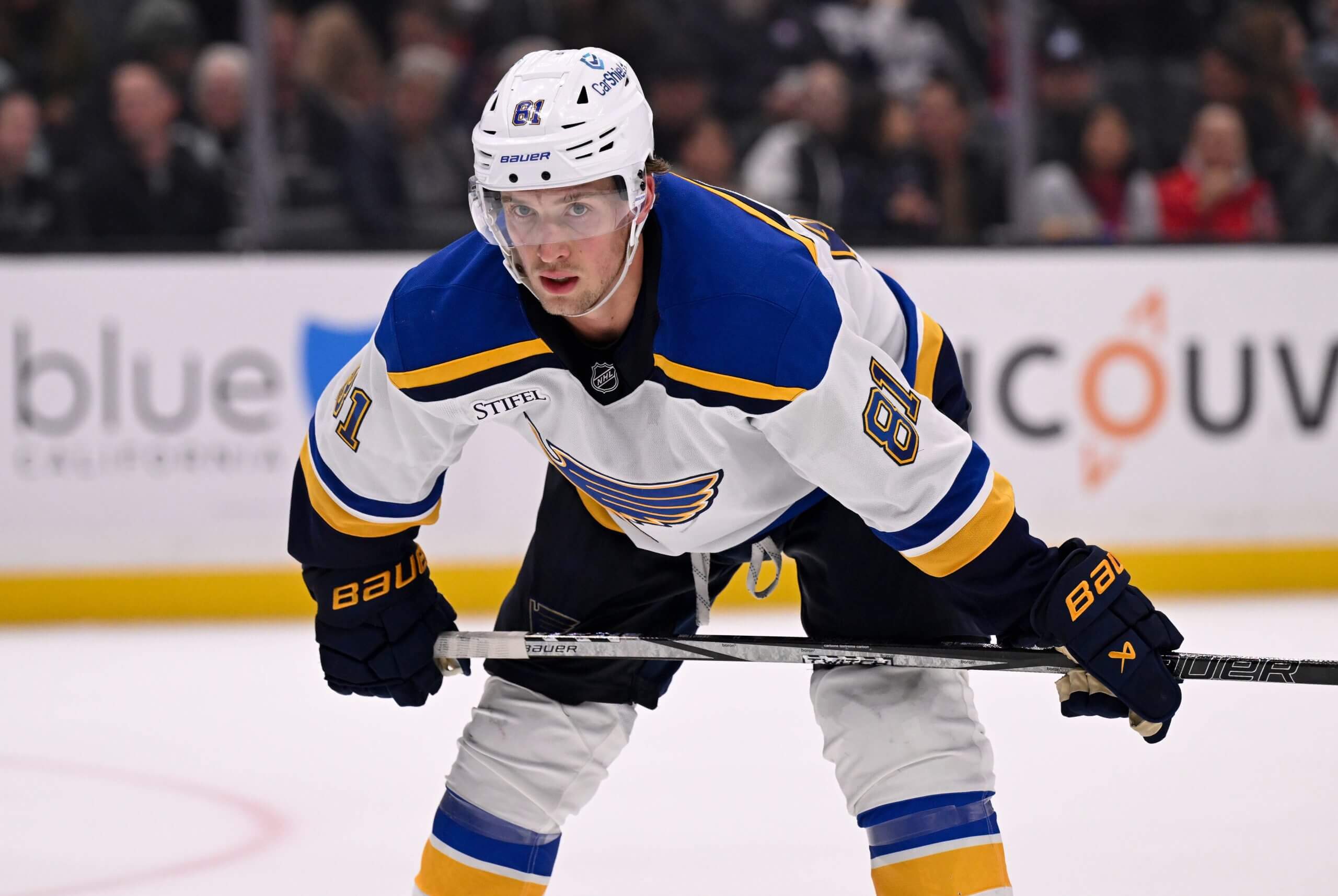
ST. LOUIS — It’ll take a few days to digest what happened to the St. Louis Blues in the final two minutes of regulation against the Winnipeg Jets in Game 7 Sunday.
General manager Doug Armstrong will address the media Tuesday afternoon, and the Blues’ heartbreaking 4-3 double-overtime loss to the Jets will undoubtedly be part of the discussion.
Advertisement
However, the offseason doesn’t wait, so the Blues brass will look into how it can take the positives of the past two weeks and put the club back in a position where it can return to the postseason in 2025-26.
“It’s only going to help us,” Blues coach Jim Montgomery said after the game. “The exponential growth going through something like this is only going to help us for next year, but it’s incumbent upon us to do the work to get better.”
One of those young players, forward Jake Neighbours, laid out the lessons they learned.
“It’s the ups and downs, the momentum swings, how to control your emotions,” he said. “I just feel with the way the series was played, it really prepares you for anything. With the physicality of it, the pace, and how tight it was out there, it’s playoff hockey, and to get a taste of that in Round 1 against the Presidents’ Trophy winners was a good way to start.”
Armstrong, who will enter his final season as GM before handing those duties over to Alexander Steen, was able to watch who performed well and where the Blues might need improvement.
As the club attempts to put Sunday’s setback behind, there will be players to sign, situations to consider and moves to make in the coming months.
Let’s look at the GM’s top priorities, as we see them.
Extend Holloway and Broberg
It would’ve been interesting to see how the Blues stacked up against Winnipeg with winger Dylan Holloway in the lineup. His speed and physicality would have been perfect for the series.
But as we know, Holloway was injured April 3 against the Pittsburgh Penguins. He missed the final five games of the regular season and all seven playoff games against the Jets. There could be an update Tuesday on the nature of his injury.
In the meantime, let the conversation begin on whether the Blues will attempt to sign Holloway, and defenseman Philip Broberg, to contract extensions. They, of course, were the two players who joined the Blues last August when the Edmonton Oilers did not match the offer sheets they agreed to with St. Louis.
Advertisement
Holloway and Broberg both have two-year contracts, so they’ll be able to sign extensions beginning July 1, when they enter the final year of their deals.
So how much will it cost to keep them?

Dylan Holloway missed the playoffs, but will likely be offered a hefty extension over the offseason. (Alex Gallardo / Imagn Images)
Holloway, 23, finished second on the Blues with 26 goals and was third with 63 points. The annual average value (AAV) on his contract is $2.29 million, and he’ll be getting a significant raise if he decides to re-sign, whether it’s this offseason or after his deal expires in the summer of 2026. He’ll be a restricted free agent at that point, so the Blues will still possess his rights.
The Blues have perhaps seen enough of Holloway that they’d want to sign him to a eight-year contract, but with the salary cap rising and Holloway giving up unrestricted free agent years in an maximum-term deal, he could ask for $8 million per season or more. In 2022, Jordan Kyrou inked an eight-year, $65 million deal ($8.125 million) after one season of putting up 27 goals and 75 points.
Broberg, 23, had eight goals and 29 points in 68 games in his first season with the Blues. His AAV is $4.58 million, and he’ll also be getting a pay bump. Broberg played in the second pair most of the season, but has top-pair potential. Either way, he’d also be in line for a $7-8 million AAV on a long-term deal.
Assuming Holloway and Broberg are comfortable staying in St. Louis, it would be wise to lock up both this summer.
Decide on Kyrou before no-trade clause kicks in
Kyrou’s eight-year contract started in 2022-23, but his full no-trade clause doesn’t kick in until July 1, 2025. So if the Blues have any intentions of trying to trade him without his approval, they have approximately two months to do so.
This season might’ve been Kyrou’s best all-around season. He scored 36 goals — one shy of his career high — and he led the Blues with a plus-minus rating of +23. He was on the ice for 63 five-on-five goals for, according to Natural Stat Trick, the most of any Blue, and just 35 five-on-five goals against, which was the fifth-fewest among the team’s forwards.
Advertisement
In the playoffs, Kyrou had three goals, two of which were on the power play, and no assists in the seven-game series. He was on the ice for three five-on-five goals for and five against.
How do the Blues feel about him? Well, it’s hard not to like a player who’s led your team in scoring the last three seasons and made a concerted effort to improve his defense. But does he match the vision for the future, specifically GM-in-waiting Alexander Steen’s vision? That remains to be seen.
If the Blues wanted to move Kyrou prior to the triggering of his full no-trade clause this offseason, one fact is certain: while there’s been interest in him around the NHL in recent years, his stock might be a little higher this summer after the season he just had.
Check back in with Schenn
It’s fairly obvious Blues captain Brayden Schenn could’ve finished the season with another team if he wanted. The Ottawa Senators and Toronto Maple Leafs were interested in the veteran center, who made it clear that he wanted to stay put.
Schenn proved his mettle as a player and a captain down the stretch with the Blues, being the backbone of a team that went 19-4-3 down the streak and snuck into the playoffs on the final day of the regular season.
Schenn finished with 18 goals and 50 points this season, and sure, he was better when he had Holloway on his wing before Holloway’s injury. But give Schenn, who was plus-3 after being minus-22 last season, a lot of credit.
But Schenn will be 34 years old by the start of next season and has three seasons remaining on his eight-year, $52 million contract signed in 2019. His no-trade clause will go from a full NTC to a modified NTC, in which he can turn down a deal to 15 of 32 teams, on July 1.
Do the Blues re-engage Schenn about the possibility of accepting a trade this summer? Does he give it more consideration now that he’s not in the middle of a playoff chase?
It’s worth monitoring.
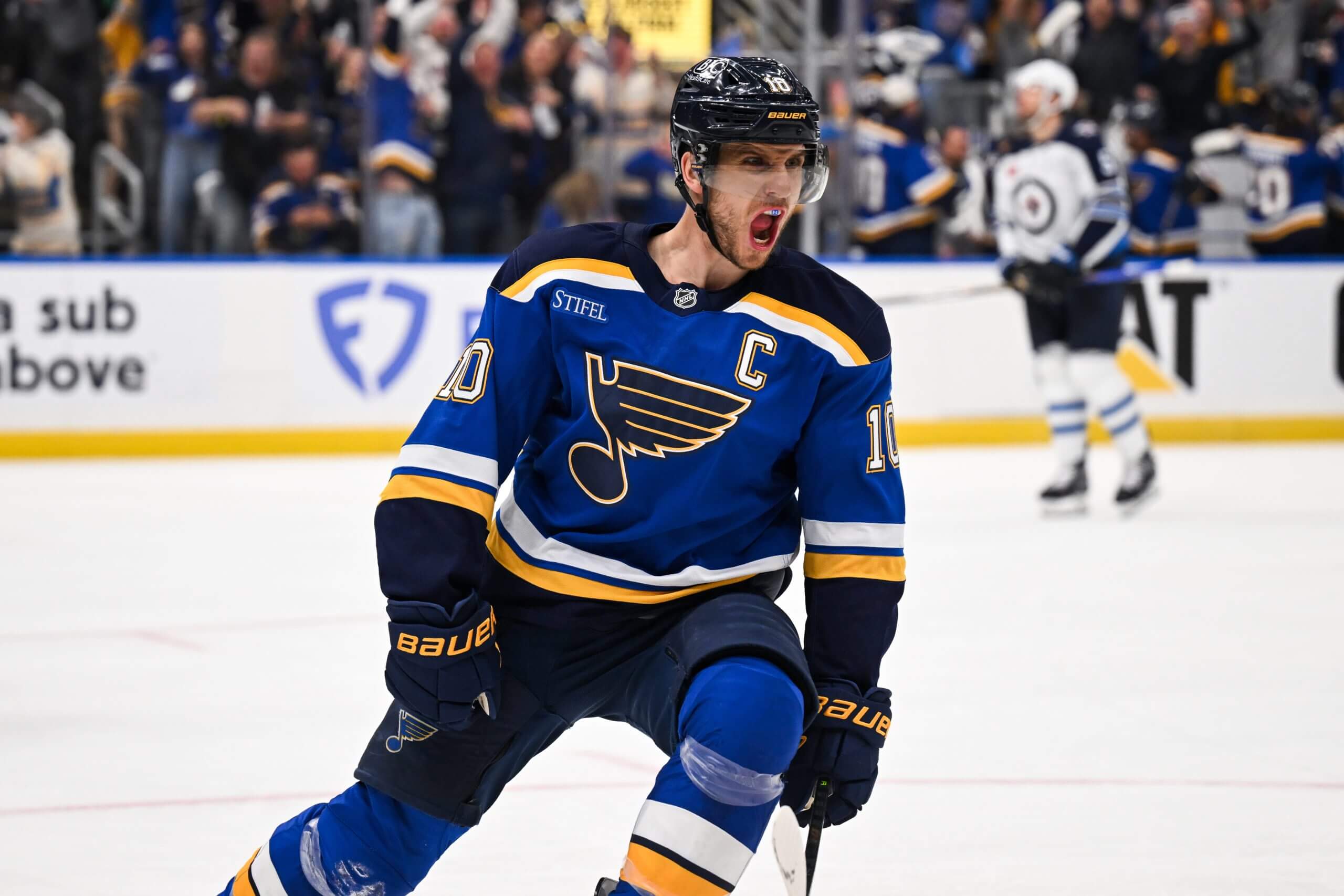
Captain Brayden Schenn’s full NTC opens to a 15-team modified NTC on July 1. (Connor Hamilton / Imagn Images)
Decide if Dvorsky is ready
It’s hard to believe Dalibor Dvorsky would be ready to take on a full-time role with the Blues in 2025-26 after playing just two games with the team this season. That’s not to say he can’t do it, but that’s not the normal progression.
Dvorsky, the No. 10 overall pick in 2023, spent most of the season with AHL Springfield, where he had 21 goals and 45 points in 61 games and was an All-Star. But he got just two appearances with the big club before being re-assigned to the Thunderbirds.
Advertisement
Though Dvorsky picked up no points while averaging 9:25 of ice time in his two games with the Blues, he didn’t look completely out of place. He just appears to need more time and experience, which is why it seems unlikely that the club would have him in the top six early in the year.
If Schenn is traded and Dvorsky is either kept in AHL Springfield or given a limited role, the Blues would likely have to address their No. 2 center position via trade or free agency.
Re-sign Faksa?
Normally a fourth-line center doesn’t make the offseason to-do list, but with how well Radek Faksa has fit in with the Blues, bringing him back next season has to be a priority.
Faksa, 31, who was acquired from the Dallas Stars last summer for future considerations, is a pending UFA.
Most people will insist fourth-liners are a dime a dozen and if the Blues don’t re-sign Faksa, they can find somebody to replace him. But considering the chemistry Faksa had with Nathan Walker and Alexey Toropchenko had on what was dubbed the “WTF” (Walker-Toropchenko-Faksa) line, should the team even try to look elsewhere?
Faksa has a $3.25 million cap hit on the five-year deal he signed with the Stars, and he likely wouldn’t break the bank to stay in St. Louis, especially considering his comfort level with his linemates.
Decide who’s coming back on D
The defensemen who are all but guaranteed to be on next season’s roster are Colton Parayko, Cam Fowler and Broberg. Tyler Tucker is another strong possibility, but it’s tougher to say. After that, the Blues have some decisions to make.
It’s been an up-and-down couple of seasons for Justin Faulk, 33, who has two more seasons left on his contract with an AAV of $6.5 million. His offense has dropped off significantly — just six goals and 62 points the past two seasons combined after 27 goals and 97 points the previous two years. And he was on the ice for 39 five-on-five goals for and 45 against this season, per Natural Stat Trick.
Advertisement
Meanwhile, there’s Nick Leddy, who has one more year left on his contract with a $4 million AAV and a 16-team NTC, and Ryan Suter, who’s a pending UFA.
It would seem that if there’s a taker for Faulk, the Blues could upgrade at in the top four on the right side. And it’s perhaps time to cut bait with both Leddy and Suter if the team can find suitable replacements.
What is Krug’s future?
There is no confirmation yet of Torey Krug’s intentions to resume his NHL career after having season-ending ankle surgery last fall. The procedure is called “subtalar fusion,” and a local physician labeled it a ‘Hail Mary’ in terms of Krug trying to resume his playing career.
It would seem the Blues are not counting on the return of Krug, who has two more seasons left on his contract with a $6.5 million AAV. If he’s unable to return, the team would would be allowed to keep him on long-term injured reserve (LTIR).
(Top photo of Jordan Kyrou: Ronald Martinez / Getty Images)
This news was originally published on this post .







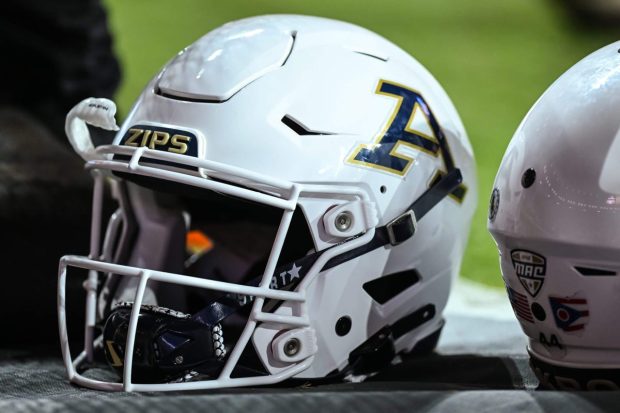
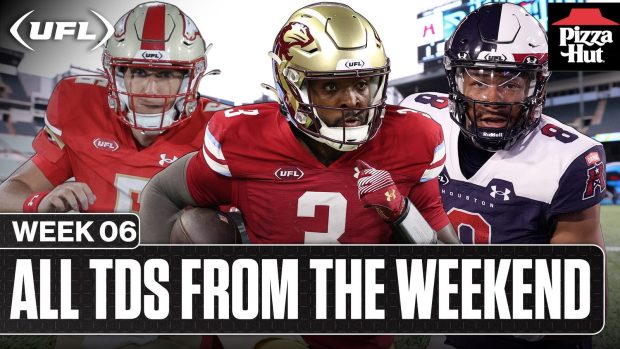
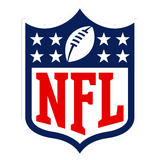
Be the first to leave a comment